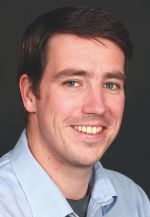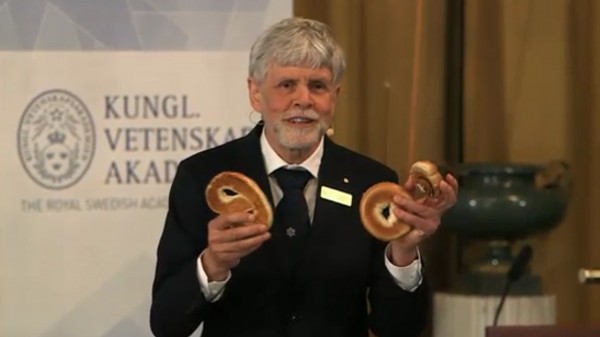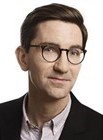Previous events - Page 219
Rajeev Bhaskaran (Indian Statistical Institute, Bangalore, India) gives a lecture with the title: On the connection between SPDE’s and diffusions arising out of an SDE.
Johannes Jakob at the Department of Geosciences will be defending his dissertation: Geodynamic Significance of Regional Mélange Units at Divergent and Convergent Plate Margins — Case Studies from the Scandinavian Caledonides and the North American Cordillera
Johannes Jakob at the Department of Geosciences will be defending his dissertation: Geodynamic Significance of Regional Mélange Units at Divergent and Convergent Plate Margins — Case Studies from the Scandinavian Caledonides and the North American Cordillera
Welcome to the GeoHyd Lunch Seminar on Friday Nov. 11th @ 11:30 in aud. 1 in the Geology building.
Doctoral candidate Johannes Jakob at the Department of Geosciences will give a trial lecture on the given topic: Non-volcanic passive margins: from continental lithosphere rifting to hyperextension. Geological and rheological implications
Michael Whittaker from University of Glasgow will give a talk with title: New directions in self-similar group theory
Abstract: A self-similar group (G,X) consists of a group G acting faithfully on a homogeneous rooted tree such that the action satisfies a self-similar condition. In this talk I will generalise the above definition to faithful groupoid actions on the path space of more general graphs. This new definition allows us to work out the structure of the KMS state space of associated Toeplitz and Cuntz-Pimsner algebras. This is joint work with Marcelo Laca, Iain Raeburn, and Jacqui Ramagge.
This thursday, at the Speciation Journal Club, we will discuss a paper entitled " Feralisation targets different genomic loci to domestication in the chicken" by Johnsson et al. 2016 in Nature Communications
Rasmus Bryder (University of Copenhagen) will give a talk with title: Twisted crossed products over C*-simple groups
Abstract: A twisted C*-dynamical system consists of a C*-algebra, a discrete group and a "twisted" action of the group on the C*-algebra, i.e., the group acts by automorphisms on the C*-algebra in a manner determined by a 2-cocycle of the group into the unitary group of the C*-algebra. Whenever the 2-cocycle (or twist) is trivial, the action is given by a group homomorphism of the group into the automorphism group of the C*-algebra. We consider twisted C*-dynamical systems over C*-simple groups (i.e.,groups whose reduced group C*-algebra is simple) and how C*-simplicity affects the ideal structure of reduced crossed products over such dynamical systems.
Linda Aune-Lundberg at the Department of Geosciences will be defending her dissertation: Estimation methods and uncertainty in area frame surveys of land cover
Doctoral candidate Linda Aune-Lundberg at the Department of Geosciences will give a trial lecture on the given topic: Consequences of land-use change and secondary succession for land cover mapping
By Oscar Puebla from the GEOMAR Helmholtz Centre for Ocean Research Kiel, Germany
Welcome to the GeoHyd Lunch Seminar on Friday Nov. 4th @ 12:15 in aud. 1 in the Geology building.
Iker S. Requerey, IAC, Spain
Microfluidics of sugar transport in plants
Plants can rightly be called masters of microengineering. Their survival and successful reproduction depends on their ability to overcome a series of physical challenges during growth and when transporting matter over great distances. In this talk, we focus on the microfluidic network responsible for energy distribution (the phloem). We combine experiments on living plants and biomimetic microfluidic devices to elucidate the basic physical principles that govern sugar transport in plants. We derive a scaling relation between the characteristic sizes of the plant organs, which optimizes the rate of sugar transport. Comparison with experimental data suggests that the pipe network is operating at or near the theoretical optimum. We further consider the coupling between photosynthesis and long-distance transport. While sap with high sugar concentration has the greatest transport potential, viscosity impedes flow, a phenomena analogous to congestion in traffic flows. The optimal sugar concentration for transport in plants is 25%, sweeter than Coke (10%) but much less viscous than maple syrup (65%). Although plants have generally evolved towards the theoretical optimum, a number of unusually sweet plants exist. This group consists primarily of crop plants such as corn (40%) and potato (50%), sugar junkies of the natural world.
This Friday the journal club will discuss a paper by Sakamoto et al. (2016): ‘Residual diversity estimates’ do not correct for sampling bias in palaeodiversity data.
Join us!
Welcome to the viewing of the award-winning movie Ex Machina and a talk about how this film continues a long tradition of thematic fears and anxieties regarding female robots and how it is connected to older religious myths. This is the first event in the series “Science of Fiction”, don’t miss it!
Velkommen til filmvisning av kritikerroste Ex Machina og foredrag om engstelse for den kvinnelige roboten og hvordan denne filmen henger sammen med oldtidens mytologier og religion. Få med deg det første Science of Fiction-arrangementet.
This thursday, at the Speciation Journal Club, we will discuss a paper entitled "Genomic variation at the tips of the adaptive radiation of Darwin's finches" by Chaves et al. 2016 in Molecular Ecology.
Masterprogrammet i astronomi har sin årlige masterorientering der fagmiljøene ved instituttet presenterer seg og informerer om mulige masterprosjekter/masteroppgaver.
Jeriek Van den Abeele, FI
Given that physical problems rarely have exact solutions, the importance of perturbation theory can hardly be overstated. Yet often, a closer look reveals that it is divergent and ill-defined! Non-perturbative effects, ubiquitous in nature and quantum theories, have to be accounted for explicitly in attempts to make sense of perturbation theory. The perspective of the resurgence framework leads to new ways of understanding perturbative expansions and reveals surprising connections to non-perturbative physics. In this talk, I will illustrate how resurgence manifests itself in the quantum mechanical context of a cosine potential, emphasising the importance of quantum tunnelling for its energy spectrum and highlighting how non-perturbative contributions are intricately encoded in perturbation theory.
(The slides will be available here)
Dr Perrine Geraudie, Akvaplan Niva
Prof Per Mykland (University of Chicago) will give a seminar in the lunch area, 8th floor Niels Henrik Abels hus at 14:15.
In this talk I will explain how the use of functors defined on the category I of finite sets and injections makes it possible to replace E-infinity objects by strictly commutative ones. For example, an E-infinity space can be replaced by a strictly commutative monoid in I-diagrams of spaces. The quasi-categorical version of this result is one building block for an interesting rigidification result about multiplicative homotopy theories: we show that every presentably symmetric monoidal infinity-category is represented by a symmetric monoidal model category. (This is based on joint work with C. Schlichtkrull, with D. Kodjabachev, and with T. Nikolaus)




